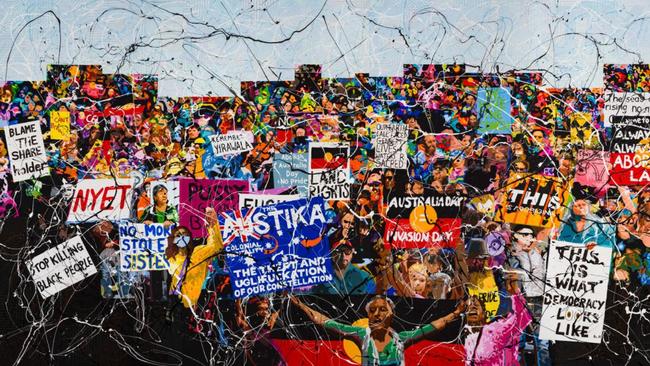
In the first place, and setting aside judgments of value for the moment, few of the acquisitions – especially considering their cost – seem to build on the strengths of the National Gallery or fill gaps in its collection. One might expect acquisition funds to be divided in some proportionate way between important collecting areas, which in the case of the NGA are Australian, Aboriginal and Asian, as well as European and American, art, especially of the past few centuries preceding and coinciding with settlement. Yet very little has been purchased that adds significantly to the existing holdings in these fields.
Management has evidently lost sight of a strategic vision for the collection, bewitched by fashion, glamour and that particular intoxication with ideological gestures that we could call Political Cringe. Thus a great deal has been spent on Aboriginal art, but mostly on a number of strident contemporaries who are successfully monetising their sense of grievance. Huge sums have also been spent on buying a number of second-ranking female artists as a matter of principle, while ignoring many better women artists who don’t fit the stereotypes of the contemporary art market.
All this is very nice work for the galleries who have taken a handsome cut on grossly inflated prices, and some are doing particularly well, evidently as preferred suppliers. Other significant galleries are conspicuous by their absence, as are the artists they represent. All this is suggestive of laziness, complacency and an alarming level of groupthink among the director, the curators, the acquisitions committee and the board of the gallery.
The largest sums have been spent on currently fashionable artists producing questionable work for astronomical prices. It is unwise to buy in an inflated market, and unwise to buy work produced so recently, by individuals who are successfully working the system today, but may well be consigned to a much lower rank when the promotional hype abates. As I have suggested before, it would be preferable to let corporate sponsors purchase these works as part of building the innovative image of their brands; if the works have durable interest, they can be gifted to museums for a tax deduction in later years.





The list of acquisitions and prices that the NGA has been forced to reveal under Freedom of Information is disturbing to read, and suggests that the state of management and oversight of that institution is even worse than we previously thought.